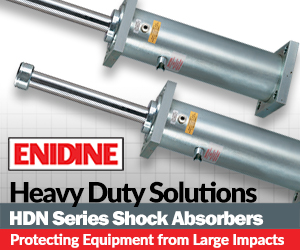5 Preventive Maintenance Benefits That Show Why Organizations Need it
Maintenance management is finally getting the attention it deserves. Earlier, most organizations had no choice but to implement reactive maintenance, that is, maintenance that’s done after the machine malfunctions. While it’s more of an “if it ain’t broke, don’t fix it” approach, it was never really practical - it didn’t help improve asset reliability, incurred costs, and caused production disruptions via unplanned machine downtime.
Fortunately, preventive maintenance is being more commonly used by different organizations, and the benefits are numerous. Without further ado, let’s dive deep into the top preventive maintenance benefits that most organizations experience upon implementing it.
It improves the equipment’s lifespan, reliability, and performance
This is one of the most prominent preventive maintenance benefits that saves organizations a considerable amount of money. Think of it this way - if the equipment was receiving reactive maintenance, it would’ve been getting care AFTER it malfunctioned. However, preventive maintenance focuses on maintenance activities, inspections, and tasks even while the machine is operating normally. That’s because preventive maintenance believes in “prevention is better than the cure”. Now, if a piece of equipment doesn’t receive any inspections or routine maintenance, it will lead to more wear and tear, overheating, and other problems, and might even lead to premature death.
Compare that to what preventive maintenance does and the benefits are quite clear. By ensuring that the equipment is receiving ample care, maintenance, and servicing, preventive maintenance helps the equipment perform reliability and even last longer - reducing replacement and maintenance costs in the process. The next point is quite similar to this one, but it deserves a different point itself.
It minimizes unplanned machine breakdowns
Another prominent preventive maintenance benefit is that it helps reduce unplanned machine breakdowns. By ensuring that the pieces of equipment proactively receive maintenance or inspections, these activities help the equipment run smoothly or identify any red-flags that might cause breakdowns in the future. If the latter happens, such machinery is taken offline and provided appropriate servicing. All in all, proactive maintenance helps reduce unplanned downtime, and that brings us to the next in this list of preventive maintenance benefits.
It prevents sudden production disruptions and bottlenecks
One of the biggest challenges of manufacturing firms is to improve efficiency because it’s easier said than done. However, preventive maintenance is definitely a step in the right direction. By helping keep all the machines running smoothly, preventive maintenance reduces unwanted downtime as well as production disruptions and bottlenecks. For instance, an industrial centrifuge that’s malfunctioning will halt the production process. However, with preventive maintenance and with a well-equipped CMMS software , it runs smoothly. Even if the equipment has issues, maintenance inspections and digital checklists can help identify even the smallest problems - providing the maintenance manager time to come up with a viable solution.
It prevents workplace safety incidents
One might think that how is workplace safety related to preventive maintenance benefits? Well, it’s quite simple - without preventive maintenance, most equipment run past their limits quite frequently. As a result, the equipment might malfunction, overheat, or even die prematurely - all of which can lead to workplace safety incidents.
Preventive maintenance, on the other hand, ensures that the equipment operates within the manufacturer’s guidelines, isn’t overworked, and receives routine maintenance - helping keep the assets run safely for everyone involved.
It reduces several costs significantly
Coming down to one of the most important benefits, preventive maintenance helps organizations save numerous types of costs such as replacements costs, repair costs, maintenance costs. Since it also helps reduce workplace safety incidents, it also helps organizations from violations and fines in the process. As previously mentioned, preventive maintenance helps the equipment last longer and prevent premature deaths - helping avoid replacing expensive and complex equipment that costs thousands of dollars.
Conclusion
While predictive maintenance is a trending topic as well, it’s quite new and might not be everyone’s cup of tea. IoT sensors, internet connectivity, AI, and other components might be too expensive and complex for several organizations - let’s not forget that some organizations are still using reactive maintenance. That being said, preventive maintenance is still the most ideal maintenance approach for most organizations - it helps prevent unplanned downtime, ensure workplace safety, reduce maintenance costs , minimize bottlenecks - the benefits are many with very few disadvantages.










